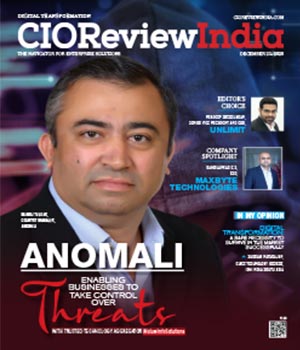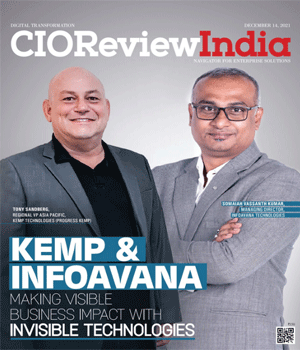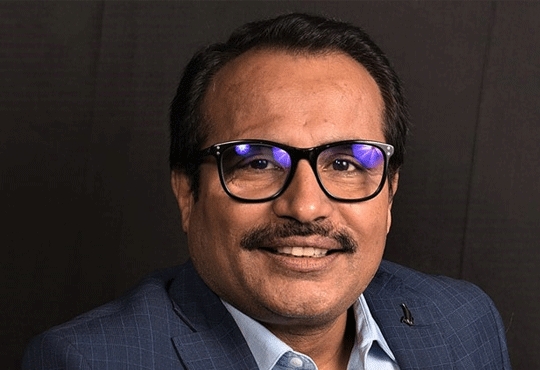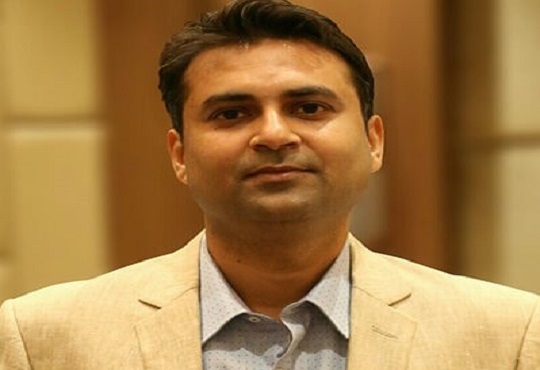
Decoding the Art of Workforce Transformation
Excerpts from an interaction with Sheenam Ohrie, Vice President, Dell Digital and APJ CIO Leader, Dell Technologies. | Wednesday, 08 July 2020, 13:16 IST
Sheenam Ohrie in an interaction with Sudhakar Singh, Editor, CIOReviewIndia, elucidates how businesses need to undergo a workforce transformation to continue running their operations during the pandemic.

What are the major challenges thrown up by the pandemic which are bothering CIOs the most? How are you addressing those challenges and which technologies are proving to be helpful in this scenario?
I think the biggest challenge we faced was to convert our workforce into a fully remote workforce over a weekend. I'm going to take you back into history a little bit and talk about how we prepared for this, and how that helped us. Our journey of a connected workplace started decades back, and that's when we introduced connected workspace. We actually had an ambition of having 40 to 50 percent of our global workforce working remotely. So, we started this journey and were well ahead on it. That preparedness helped us in the journey. For a connected workplace, we had strengthened our VPN (Virtual Private Network). Mobile devices had been enabled with digital workplace platform, making the employee experience seamless. That's something which we did over the last few years.
Since March we realized that the situation would get out of hand, and much before the government declared lockdown, we understood that we would have to enable our colleagues to work from home. The biggest thing for us was to enable our contact center employees to work from home and to do that over a weekend. They literally worked in shifts and had desktops and a hard physical phone next to their desktops to work in office. How do you enable around 4000 people to be working from home over a weekend? We classified them and created laptops for them. We actually moved them from physical phones to soft phones on their laptops and ensured that those 4000 people were able to connect with their laptops. One thing that enabled us do this over a weekend was that we had created personas for different kinds of employees. Be it a product engineer or a developer, a salesperson or a data analyst or a contact center executive, each of them need a different persona. Based on their persona, we gave a tailored on-boarding experience, ensuring that they had a laptop and connectivity defined to them before they joined in. Because we had the persona defined, we could quickly move them over from desktops to laptops, and that's what we did.
“Digitizing business processes and work operations to get to anytime anywhere scenario is the most complicated level of digital transformation.”
For the new employees in remote locations, we had a VDI (Virtual Desktop Infrastructure) kind of service where we allowed them to connect to Dell servers through a virtual machine. The other challenge that we faced was pertaining to services. How does one enable that the telephony calls and response rates remain the same or may be better? So, we formulated a way of doing service and ensured that upgrade services were provided regularly. Lastly, as the internet speeds are low at home, we decided to go for SD-WAN implementation. We implemented SDN at each major location. So, we didn't have to follow the protocol of the network and from the branches itself, we could siphon off network bandwidth to reach the cloud providers directly. That's something we've done in the last three months and it is fully functional and operational.
With the shift towards remote working, there has also been an aggravation of concerns surrounding information security. How do you address this issue?
We are now talking about security at every point. Be it at the entry level when you have to get access to the network, or when you are about to access sensitive information, or when you enter into a data center, we have got enough security protocols aligned for every application for every entry point, whether it's a VM or a physical data center. There are security protocols defined for every level. At this point of time, we have about six to seven levels of security protocols that one needs to go through in order to access the environment.
When we talk about digital transformation, especially in the context of workforce, there are businesses implementing several solutions looking to transform their workplaces. But more often than not, they fail to meet the business objective. How should enterprises strategize for digital transformation?
Different people interpret digital transformation in different ways. One of the most common definitions of digital transformation is trying to remove the manual intervention and doing automation. There are monitoring tools to ensure that things are working systematically and in the right manner. At the second level of digital transformation, you go into things like robotic automation, wherein you try to visualize what the data is actually telling you. At this level, you use Machine Learning to start to formulate predictions based on history. The next level of digital transformation is when you say everything should be mobile. So, you adopt a mobile-first kind of policy where you try to enable a person sitting anywhere with any kind of device, if he has the right credentials, to be able to log in to the network.
So, digitizing business processes and work operations to get to anytime anywhere scenario is the third and the most complicated level of digital transformation. That is when you have to start involving businesses. The value of digital transformation is realized when you try to understand the business needs and align your digital transformation initiatives with the expected business outcome. Define a problem statement and some very measurable goals, so that you can start building digital processes around that. So, my advice would be to talk to businesses, get their real business statements, define what success looks like, and then start moving ahead on that. That's when digital transformation becomes very intrinsic to the organization and extremely useful.
How do you see the future of enterprise workforce, especially after the pandemic? In what ways do you think enterprises must evolve to adapt to the changing dynamics?
We need to figure out how to allow our employees to work anytime anywhere. How does one adopt technology that is available in the marketplace and provide the employees with flexibility? The future entails a very flexible employee experience that will allow employees to work from wherever they are. The flexibility to work and therefore having the right technology is very important. Security will be a key aspect and technology allows you to ensure that. It allows you to secure your organization, your data center and your end points. The future lies in how you secure your end points. You must know exactly what is happening on an endpoint device. So, it is about ensuring that. It is also important to consider leveraging a hybrid cloud kind of scenario. The third thing would be the progression into 5G and how we can use AI/ML and AR/VR and combine that with something like robotics. That would really be the future in the next two to three years. Those organizations will benefit the most which will be able to synthesize the data, make sense of the huge data and draw some insights out of it.
CIO Viewpoint
The Constantly Evolving Technology Landscape in...
By Janifha Evangeline
Navigating the Digitalization of Mining Industry
By Janifha Evangeline
How To Achieve An Effective Digital Transformation
By Yogendra Singh, Head-IT/SAP, Barista Coffee Company Limited
CXO Insights
No-code platforms: Enterprise-wide Adoption...
By Rahul Murthi, Director at Acies
Unleashing the Potential of IT in Engineering...
By Gyan Pandey, Head - Digital/CDO, Voltas
Low Code and Artificial Intelligence - The...


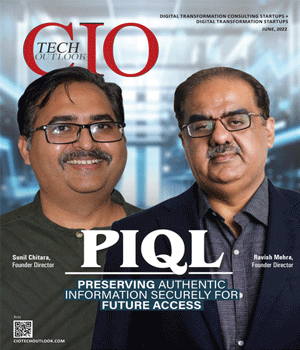
.jpg)
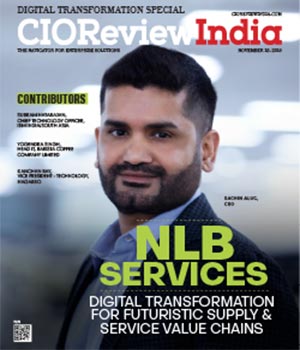
.jpg)
